|
© Borgis - Postępy Nauk Medycznych 10, s. 730-736
*Iwona Repka1, Jerzy Wordliczek2
Stan emocjonalny a jakość życia osób z przewlekłym bólem neuropatycznym
Emotional state versus quality of life of patients with chronic neuropathic pain
1Department of Clinical Nursing, Nursing and Midwifery Institute, Faculty of Health Sciences,
Jagiellonian University Medical College, Kraków Head of Department: Maria Kózka, MD 2Department of Internal Diseases, Jagiellonian University Medical College, Kraków Head of Department: Tomasz Grodzicki, MD, PhD Streszczenie
Wstęp. Ból neuropatyczny stanowi poważny problem w medycynie przede wszystkim ze względu na znaczny stopień natężenia oraz oporność na tradycyjne leczenie, co wpływa na funkcjonowanie fizyczne, psychiczne oraz psychospołeczne człowieka i zmienia jego jakość życia. Cel pracy. Celem badań było poznanie związku pomiędzy oceną bólu a poziomem akceptacji i stanem psychicznym chorych z bólem neuropatycznym oraz z przewlekłym bólem kręgosłupa, objętych opieką stacjonarną. Materiał i metody. Badaniem objęto 160 chorych z bólem przewlekłym, obojga płci, w przedziale wiekowym od 25 do 85 roku życia. Spośród badanych osób wyodrębniono dwie grupy. Pierwszą grupę – BN (n = 100), stanowili chorzy z zespołami bólowymi, takimi jak: neuralgia nerwów czaszkowych, neuropatie obwodowe, wieloobjawowe zespoły bólu miejscowego. Do drugiej grupy badawczej (PBK) zakwalifikowano pacjentów z przewlekłym bólem kręgosłupa, w liczbie 60. Ocenę stanu emocjonalnego weryfikowano za pomocą skali HADS-M. Natomiast jakość życia oraz jej poszczególne domeny weryfikowano za pomocą skali WHOQOL-BREF. Wnioski. Analiza zebranego materiału potwierdziła wpływ stanu emocjonalnego na poziom akceptacji choroby, jakość życia i jej poszczególne wymiary w obu badanych grupach. Wyniki. Badania własne potwierdzają wpływ stanu psychicznego chorego na modulację poziomu bólu i jakości życia. Słowa kluczowe: ból przewlekły, jakość życia, emocje
Summary
Introduction. Chronic neuropathic pain is a serious in medicine, primarily due to a significant degree of intensity of pain and resistance to traditional treatment, which affects the functioning of the physical, psychological, human’s social function and creates his quality of life. Aim. The purpose of the work was to the relationship between pain perception of the patient’s psychological condition with neuropathic pain and the chronic of back pain, under of the stationary care. Material and methods. Hundred-sixty patients with chronic pain, the study comprised patients of both sexes, and their age range from 25-85 years. Tested patients were divided into two groups. The first group of BN (n = 100), included patients with pain syndrome, such as: cranial neuralgia symptoms, peripheral neuropathies, complex regional pain syndrome. The second research group (PBK), included patients with chronic pain of back, the number to 60. Assessment of the state of emotional using the scale of the HADS-M. However, the quality of life and individual domains were assessed using the scale of the WHOQOL-BREF. Results. Analysis of the harvested material of its own, has confirmed the impact of emotional state on the quality of life, the overall perception of the health, quality of life and its various dimensions of hospitalized patients. Conclusions. Own research, confirms the equivalence of the patient’s psychological condition in modulation level of pain and quality of life. Key words: chronic pain, quality of life, emotional state
INTRODUCTION
The most recent knowledge considering different mechanisms of neuropathic pain induction gives a possibility to establish an individual strategy of therapeutic treatment leading to entire or at least partial pain relief. International Association for the Study of Pain (IASP) recommends a multi-disciplinary treatment in cases of patients suffering from chronic pain. In order to improve dexterity and quality of lives of patients, not only does IASP emphasise the somatic aspects of treatment, but also it gives weight to its psychological, social, recreational and vocational aspects (1, 2).
According to the definition, pain is a multi-factorial phenomenon which ought to be analysed taking biomedical, psychosocial and behavioural factors into consideration (3). In cases of patients suffering from chronic pain, psychological treatment is also considered. This type of chronic pain treatment includes behavioural therapy which influences an overall pain reception and can help in restoring functionality and improve the quality of life. Moreover, it is focused on motivating patients by complying with the therapeutical recommendations and by active involvement of a unit (4). An interdisciplinary therapy is the most successful (5, 6). In order to eliminate pain, one should take different methods of therapy into account, including pharmaceutical, invasive and physical methods, additionally with methods that are supported with elements of psychology and that satisfy individual needs of patients (7-10). What is more, one should take alternative methods into consideration (11).
Estimation of the subjective and objective quality of life comprises all indexes mentioned above and it emphasises a relationship between objective conditions of living and an individual, subjective evaluation of them. When defining quality of life one should distinguish between the overall quality of life (QOL) which references the general well-being of individuals in their daily lives, including biological, psychological, interpersonal, social, cultural, economical and ecological quality and the quality determined by the health conditions (12).
According to Levine and Croog the main components of conceptualisation are performance of all the social roles, estimation of the physical state, estimation of the emotional state, intellectual functioning and general satisfaction and good mood (12).
A chronic disease causes patients’ adaptation to the disease. The shift of the response is one of the most important mediators of the process of adaptation. It is related to the internal changes (standards, values and conceptualisation of the quality of life). Integration of the changes in the response to the quality of life lets us understand its influence on the state of health and evaluation of changes. It is health-related, it depends on individual features, on mechanisms supporting accepting changes of the health state and changes of self-understanding, taking internal standards and values or conceptualisation into account (13).
When discussing quality of life one cannot ignore the role of a successful coping with life circumstances of a disease that are dramatically becoming worse in time. Effectiveness in coping with a disease is essential in controlling stress reactions and the self-perception as a confirmation of effectiveness and resistance. Elaborating different, successful ways of dealing with stress, a patient is able to decrease the level of negative emotions (fear and anxiety) and to improve abilities of increasing subjectively sensed well-being of an individual (14).
Ware et al. suggest that different elements of health condition, including psychological and social components, as well as physical aspects may be regarded as independent dimensions. On the other hand, one may assume that these dimensions are functionally related (12).
Nowadays quality of human life is the most prevailing criterion of a medical therapy. The development of different disciplines requires an overall attempt to this phenomenon. Different dependences and interrelationships between different fields of quality of life are distinguished in order to separate individualistic dissimilarities (15, 16).
Suffering is the medical exponent of pain. It is a psychological component of behaviour induced by pain. Development of sensations related to pain consists of two elements: an emotional component (negative emotions, pain is regarded as distress and grief) and a cognitive element (the one that informs what can be damaged). In the case of formation of the emotional component of pain experience gained early during childhood have a great influence on the process (17-19).
AIM
This research project was carried among patients experiencing chronic pain and aimed at understanding a relationship between depression, fear, aggression and quality of life with all its components.
MATERIAL AND METHODS
The research project was performed in Department of Pain Therapy and Palliative Care, Jagiellonian University Medical College. The studies were performed on 160 patients suffering from chronic pain. The group BN (n = 100) consisted of patients suffering from pain syndromes, such as: neuralgies of cranial neurones, peripheral neuropathies, polysymptomatic syndromes of local pain. Among analysed cases there were also 60 patients suffering from chronic spinal pain (PBK). All the studies were performed in accordance with Bioethical Commission of Jagiellonian University (KBET/130/B/2007), each patient and every institution signed an agreement. Following methodological criteria were accepted: both male and female patients were examined, patients were of the age between 25 and 85, they had been suffering from chronic pain since at least 6 months and they were treated in a systematic, planned way.
The studies were divided into two stages. The first phase (during registration in a hospital ward) was aimed at delivering information about the intensity of pain, its type before a certain therapy was appointed and estimation of living circumstances and conditions. The second stage was aimed at evaluating all the parameters mentioned above after a week of hospitalisation.
The same research tools were used in both studied groups:
1. Modified Hospital Anxiety and Depression Scale (HADS-M) created by Zigmond and Snaith. It was linguistically and psychometrically adapted to the polish conditions by K de Walden-Gałuszko, G. Chojnacka-Szawłowska and M. Majkowicz at the University of Gdańsk. Additional modifications were aimed at creating a model of negative, emotional reactions such as fear, depression and aggression in response to difficult and stressful situation (20, 21).
2. The World Health Organization Quality of Life (WHOQOL-BREF) is a short questionnaire containing 26 entries, two of which concern general quality of life and health, whereas, 24 other items are related to four domains: physical, mental, social and environmental. WHOQOL-BREF version was based on WHOQOL-100 and it was adapted to polish conditions by a group of researchers from the Medical Academy in Poznań in 1997. The scale (Saxen 1997) was created on the basis of the definition of WHO and it emphasises multi-dimensionality and subjectivism of the quality of life (22, 23).
The obtained results were statistically analysed using STATISTICA 10 version PL and MS Office Excel. In the analysis of the relationships between the variables, Spearman’s rank correlation coefficient was used. In order to compare two groups, U Mann-Whitney’s test was involved. Whereas, when comparing many different groups, Kruskal-Wallis ANOVA rang was employed. In all the analyses the effects were assumed statistically significant when p ≤ 0.05.
RESULTS
When evaluating an emotional state there is a statistically significant relationship (p = 0.0282) between fear and an overall estimation of quality of life before the initiation on treatment in a group of patients suffering from neuropathic pain. It was indicated in all studied cases that the lower the level of fear, the better was the quality of life (fig. 1). On the other hand, no relationship between the level of fear, depression, aggression and the level of quality of living was observed during the second stage of the studies in both groups of patients: BN and PBK.
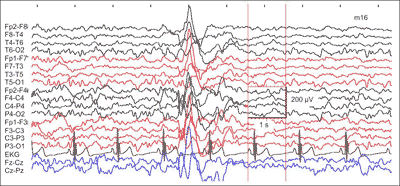 Fig. 1. The negative correlation between level of anxiety using the scale of the HADS-M and the quality of life in the patients with neuropathic pain, before treatment (p = 0.0282).
Among patients with neuropathic pain statistically significant relationships between the intensification of fear and social relations (p = 0.0165) (fig. 2) and between aggression and environment (p = 0.0140) during the first stage of studies (fig. 3) were observed.
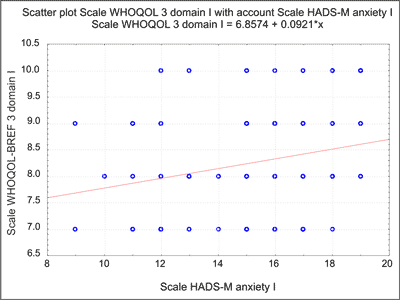 Fig. 2. The correlation between level of anxiety and the functioning of the social relationships in the patients with neuropathic pain, before treatment (p = 0.0165).
 Fig. 3. The correlation between level of aggression and the functioning of the environment in the patients with neuropathic pain, before treatment (p = 0.0140).
Patients belonging to the group BN, who experienced intensification of fear, had performed some disorders on the field of functioning in society before the hospitalisation. The disorders concerned both interpersonal relationships and the range of the support received.
Moreover, among the same group of patients it was observed that the lower level of aggression, the better was patients’ functioning in the society what was related to the improvement of perception of physical and mental safety as well as to the possibility of using gained information and having a better access to the health care.
However, after one week of hospitalisation a statistically significant relationships between fear and physical dimension (p = 0.0323) (fig. 4) and between aggression and psychological dimension (p = 0.0031) (fig. 5) were observed.
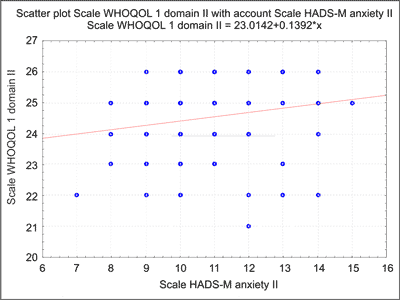 Fig. 4. The relationship between level of anxiety on the functioning of the physical in patients with neuropathic pain, after a week of therapy (p = 0.0323).
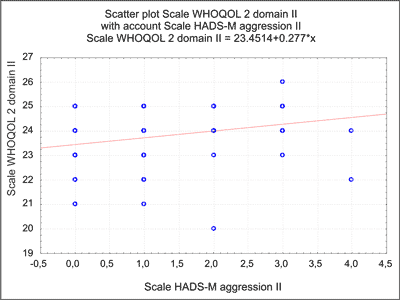 Fig. 5. The relationship between level of aggression on the functioning of the psychological in patients with neuropathic pain, after a week of therapy (p = 0.0031).
Despite certain treatment, remaining levels of fear and aggression restricted physical functioning among patients in the group BN, especially in the second phase of performed studies.
Among patients with chronic spinal pain (PBK) a statistically significant relationship between depression and physical dimension occurred before the beginning of therapy (p = 0.0453) (fig. 6). Patients suffering from severe depressive disorders experienced considerable limitations in their physical dimension.
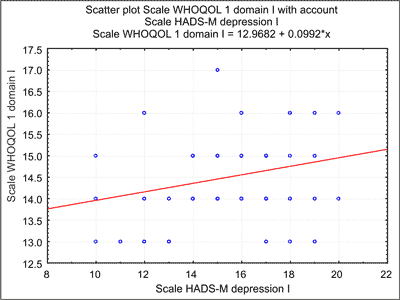 Fig. 6. The correlation between level of depression and the functioning of the physical in the group to patients with chronic back pain (p = 0.0453).
During the second stage of research project, statistically significant relationships between aggression and psychological domain (p = 0.0250) and between aggression and the field of social relations (p = 0.0044) and also between aggression and environmental domain (p = 0.0211) were observed. Patients with chronic spinal pain (PBK), who were still aggressive, felt a significant deterioration of their functioning on the field of social relations, interactions with environment and on their psychological mental level (tab. 1).
Table 1. The relationship between of the patient’s psychological condition on the quality of life and its various dimension.
DISCUSSION
Patients with chronic pain present a proclivity to experience much emotional suffering resulting from the duration of the pain. They also experience a limited medical influence on their physical self comfort. Long-lasting pain evokes a psychological and psychosocial stress that is able to cause depression, fear and aggression (24).
Gorsmen et al. confirmed that mental and somatic syndromes are driven by peripheral changes of neuropathic pain. This assumption points at different mechanisms responsible for the progress of mood disorders in both groups of patients (25). Patients suffering from chronic somatic diseases sustain a decrease of the quality of life which is conditioned by the state of their health (26, 27), especially in the physical and psychological domain (28, 29).
Cline also confirms that psychological factors, such as: depression and fear, are a kind of a predisposition to a progress of chronic pain, they also affect behaviour and consolidate disability (30).
Our results show that emotions influence the level of the estimated quality of life. In the group of patients with neuropathic pain it was confirmed there was a relationship between social relations and fear, which have an influence on an overall quality of life. After a week of hospitalisation it was observed that there was a relationship between a low level of fear and a general improvement in the physical domain. A relationship between the low level of aggression and improvement in the psychological domain was confirmed. In the cases of patients with chronic pain a high level of depression influenced the limitations of physical health. The second stage of our research indicated a positive interaction between the low level of aggression and the psychological domain, social relations and environmental domain.
Bair et al. and Katz claimed that in the cases of chronic pain depression and fear have an influence on the intensification of the pain, they extend the time of the treatment and increase a probability of obtaining worse results. According to Bair et al. there is an interaction between depression and pain. There are also noticeable changes during an ongoing therapy (intensification of depression, fear and aggression as a result of intensification of the pain during the initial phase of the treatment and a considerable improvement during the stay on the ward) (31, 32).
Golec and Dobrogowski distinguish an interaction between pain and depression and they confirm their relationship (33). Saarijarvi et al. point at a negligible decrease of quality of life in the cases of patients suffering from depression disorders which are influenced by the sensation of pain and a significant handicap of a patient (34). This statement has a reference to my results which show that depression disorders were decreased during the treatment, insignificantly in the group PBK. A detailed analysis pointed at a fact that depression disorders dominate among younger patients in the group BN, before hospitalisation.
Mattia et al. also claim that when deciding on the type of care over a patient with neuropathic pain it is essential to consider the relationship related to depression which is a consequence of a pain syndrome because it increases susceptibility to evoke such mood. However, on the other hand depression, being a rudimentary mental disorder, elicits a progress of pain, which is a consequence of this disorder (35). In my research they are both comparable after one week of treatment in both examined groups. In the case of patients belonging to the group BN it was also observed that there was a difference between patients with basic education and the ones with elementary education. The former ones presented a higher level of depression after one week of treatment.
Results presented by Han et al. confirm the relationship between fear or anxiety and depression in the progression of chronic pain. These results emphasise the fact that the fear related to experiencing the pain is similar among patients with different localisation of the pain (it is particularly critical among patients suffering from the spinal pain localised in the loins) (36).
Such results may suggest the need of application not only single tools in estimating quality of life but also tools used in measuring depression syndromes. Aigner et al. prove that patients with escalated depression syndromes sense a lowered quality of living (37). The progress of depression is correlated with all the domains of quality of life, especially in the psychological domain.
Corruble et al. also show that the intensification of depression syndromes among patients with neuropathic pain is significantly statistically related to their education to a low extent before hospitalisation (38).
The results of Fernandez emphasised the need of paying attention to anger as weel as to depression and fear when evaluating emotions. Anger is comparably strongly related to pain. It is commonly observed among people with chronic diseases and it has a detrimental influence on physical and psychosocial functioning. An excessive intensity of anger unfavourably influences the decisions about the success of therapy. When treating chronic pain it is important to steer all the actions at motivation and an improvement of an emotional and physical well-being (39).
The fear of pain is also one of the best known indicators of social functioning, mental health, vitality and of a general state of health. Relationship between fear of pain and all the physical aspects of quality of life is less evident but is still more significant than relating the domain of quality of life with intensity of pain (40).
Greenwood et al., analysing a relationship anger-pain, took notice on its adaptive role expressed in a constructive way. A similar stand on this subject was taken in this paper what can be proved by the results (41).
Patients with neuropathic pain and chronic spinal pain experienced average intensity of anger what underwent a decrease during the treatment (40% of total elimination of aggression). No influence of demographic factors on the modification of aggression were observed both in the first and the second phase of studies.
The assumptions of Aronson confirm my results which show that no chance of meeting expectations of patients during the treatment may intensify the feeling of aggression. Such a situation can be the grounding of verification of the therapy, in which aggression should be considered as a natural instinct of every human being. This instinct is helpful in modifications of behaviour as a result of situational factors (42).
CONCLUSIONS
The results presented in literature confirm the relationship between the emotional state and the quality of life and its particular dimensions. The results show the need of further research on estimation of emotional functioning dependent on subsequent phases of a chronic disease and on the factors determining perception of the quality of life and health. Piśmiennictwo
1. Jensen ST, Finnerup BN: Neuropathic pain: sensory loss, hypersensitivity and spread of pain. [In:] Villanueva L, Dickenson A, Ollat H: The pain system in normal and pathological states: a primer for clinicians. Progress in Pain Research and Management. IASP Press, Seattle 2004; 31: 279-297.
2. Jansson PT: Neuropathic pain: definition, epidemiology, classification and diagnostic work-up. [In:] Justins DM: Pain 2005 – An Updated Review. IASP Press, Seattle 2005: 91-95.
3. Okifuji A, Ackerlind S: Behavioral medicine approaches to pain. Med Clin North Am 2007; 91(1): 45-55.
4. Osborne TL, Raichle KL, Jensen MP: Psychologic interventions for chronic pain. Phys Med Rehabil Clin N Am 2006; 17(2): 415-433.
5. Kaplun A: Nowe spojrzenie na istotę przewlekłego bólu. [W:] Idem: Promocja zdrowia w chorobach przewlekłych. Odkrywanie nowej jakości zdrowia. WHO Regional Publications, European Series, Łódź 1997; 44: 116-162.
6. Turk DC: Clinical effectiveness and cost-effectiveness of treatment for patients with chronic pain. Clin J Pain 2002; 18(6): 355-365.
7. Pither CE, Nicholas MK: Psychological approaches in chronic pain management. Br Med Bull 1991; 47(3): 743-761.
8. Turk DC, Swanson KS, Tunks ER: Psychological approaches in the treatment of chronic pain patients-when pills, scalpels and needles are not enough. Can J Psychiatry 2008; 53(4): 213-223.
9. Daousi C, Benbow A, Woodward A et al.: The natural history of chronic painful peripheral neuropathy in a community diabetes population. Diabet Med 2006; 23: 1021-1024.
10. Harden N, Cohen M: Unmet needs in the management of neuropathic pain. Journal of Pain and Symptom Management 2003; 25 (suppl. 5): 12-17.
11. Ernst E, Pittler MH, Wider B (wyd. pol. pod red. Dobrogowski J, Wordliczek J): Terapie uzupełniające w leczeniu bólu. Wydawnictwo Elsevier Urban & Partner, Wrocław 2010.
12. Rommey DM, Jenkins CD, Bynner JM: A structural analysis of health-related quality of life dimensions. Human Relations 1992; 45(2): 165-171.
13. Sprangers MA, Schwartz CE: Integrating response shift into health-related quality of life research: a theoretical model. Soc Sci Med 1999; 48(11): 1507-1515.
14. Stelcer B: Jakość życia i integracja psychiczna. [W:] Wołowicka L: Jakość życia w naukach medycznych. Wydawnictwo Akademii Medycznej im. Karola Marcinkowskiego w Poznaniu 2001: 117-127.
15. Maeyer de J, Vanderplasschen W, Broekaert E: Exploratory study on drug users perspectives on quality of life: more than health-related quality of life? Social Indicators Research 2009; 90: 107-126.
16. Borys T: Jakość życia jako integrujący rodzaj jakości. [W:] Tomczyk-Tołkarz J: Jakość życia w perspektywie nauk humanistycznych, ekonomicznych i ekologii. Katedra Zarządzania Jakością i Środowiskiem, Jelenia Góra 2003: 9-20.
17. Donabedian A: Exploration In Quality Assessment and Monitoring the Definition of Quality of Approaches to its Assessment. Health Press, vol. 1, Ann Arbar 1980.
18. Dobrogowski J, Kuś M, Sedlak K, Wordliczek J: Ból i jego leczenie. Springer PWN, Warszawa 1996: 192-207.
19. Domżał T: Ból – podstawowy objaw w medycynie. PZWL, Warszawa 1996: 15.
20. Mattia C, Paoletti F, Coluzzi F et al.: New antidepressants in the treatment of neuropathic pain. Minerva Anestesiol 2002; 68: 105-114.
21. Zigmond A, Snaith R: The Hospital Anxiety and Depression Scale. Acta Psychiatr Scand 1983; 67: 361-370.
22. Saxena S, Orley J: Quality of life assessment: The World Health Organization perspective. Eur Psychiatry 1997;12(3): 263-266.
23. Jaracz K, Kalfoss M, Górna K et al.: Quality of life in Polish respondents: psychometric properties of the Polish WHOQOL-Bref. Scand J Craing Sci 2006; 20: 251-260.
24. Winterowd C, Beck AT, Gruener D: Overview of pain, assessment and treatment consideration. [In:] Idem: Cognitive therapy with chronic pain patients. Pub Springer, New York 2000: 1-83.
25. Gormsen L, Rosenberg R, Bach WF et al.: Depression, anxiety, health-related quality of life and pain in patients chronic fibromyalgia and neuropathic pain. European Journal of Pain 2010; 14: 127.e1-127.e8.
26. Cohen SP, Argoff CE, Carragee EJ: Management of low back pain. BMJ 2008; 337: a2718.
27. Haythornthwaite JA, Benrud-Larson LM: Psychological aspects of neuropathic pain. Clinical Journal of Pain 2000; 16 (suppl. 2): 101-105.
28. Koleck M, Mazaux MJ, Rascle N et al.: Psycho-social factors and coping strategies as predictors of chronic evolution and quality of life in patients with low back pain: A prospective study. European Journal of Pain 2006; 10(1): 1-11.
29. Hoffman BM, Papas RK, Chatkoff DK et al.: Meta-analysis of psychological interventions for chronic low back pain. Health Psychol 2007; 26(1): 1-9.
30. Cline DM: Adults with chronic pain. [In:] Tintinali JE, Stapczyński JS, Cline DM et al.: Tintinalli’s emergency medicine: a comprehensive study guide. American College of Emergency Physicians, New York 2004.
31. Bair JM, Wu J, Damush MT et al.: Association of depression and anxiety alone and in combination with chronic musculoskeletal pain in primary care patients. Psychosomatic Medicine 2008; 70: 890-897.
32. Katz N: The impact of pain management on quality of life. Journal of Pain and Symptom Management 2002; 24 (suppl. 1): 38-47.
33. Golec A, Dobrogowski J: Zaburzenia depresyjne i ból przewlekły. Ból 2004; 5(4): 35-43.
34. Saarijarvi S, Salminen JK, Toikka T et al.: Health-related quality of life among patients with major depression. Nordic Journal of Psychiatry 2002: 56(4): 261-263.
35. Mattia C, Paoletti F, Coluzzi F et al.: New antidepressants in the treatment of neuropathic pain. Minerva Anestesiol 2002; 68: 105-114.
36. Han JA, Samwel A, Evers WM et al.: The role of helplessness, fear of pain and passive pain-coping in chronic pain patients. Clin J Pain 2006; 22: 245-251.
37. Aigner M, Förster-Streffleur S, Prause W et al.: What does the WHOQOL-Bref measure? Measurement overlap between quality of life and depressive symptomatology in chronic somatoform pain disorder. Soc Psychiatry Psychiatr Epidemiol 2006; 41: 81-86.
38. Corruble E, Guelfi JD: Pain complaints in depressed inpatients. Psychopathology 2000; 33(6): 307-309.
39. Fernandez E, Turk CD: The scope and significance of anger in the experience of chronic pain. Pain 1995; 61: 165-175.
40. Lame IE, Peters ML, Vlaeyen JS et al.: Quality of life in chronic pain is more associated with beliefs about pain than with pain intensity. European Journal of Pain 2005; 9: 15-24.
41. Greenwood AK, Thurston R, Rumble M et al.: Anger and persistent pain: current status and future directions. Pain 2003; 103: 1-5.
42. Aronson E: Agresja u człowieka. [W:] Idem: Człowiek – istota społeczna. PWN, Warszawa 1997: 300-354.
otrzymano/received: 2013-07-17 zaakceptowano/accepted: 2013-09-04 Adres/address: *Iwona Repka Department of Clinical Nursing Jagiellonian University Medical College ul. Kopernika 25, 31-501 Kraków tel.: +48 (12) 421-40-10; fax: +48 (12) 429-48-72 e-mail: iwona.repka@uj.edu.pl Artykuł Stan emocjonalny a jakość życia osób z przewlekłym bólem neuropatycznym w Czytelni Medycznej Borgis. |
Chcesz być na bieżąco? Polub nas na Facebooku: strona Wydawnictwa na Facebooku |








